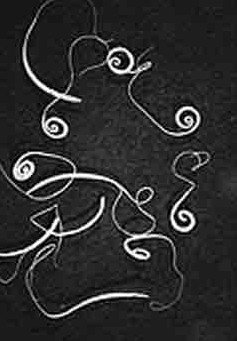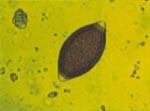BACKGROUND INFORMATION WHIPWORM
Whipworms are only seen in dogs. They lodge in the large intestine . The whipworm is very thin and is measures approximately 5 to 7 cm. The whipworm uses his mouth like a spear-like sword with wich it stabs at the intestinal wall, thus perforating the intestinal wall and releasing blood and tissue which is used by the whipworm to feed itself.
Whipworms are not seen in cats and rodents.
 |
Source of contamination and manner of transmission
Hundreds of whipworms can be presented in a dog’s large intestine. The adult female worms lay their aggs in the intestine. The eggs are passed into the environment when the dog defecates. A dog is infected by ingesting the whipworm eggs, in the digestive tract the eggs transform to larvae. After 60 to 90 days the whipworm has grown to adulthood and can start laying eggs and the cycle starts again. An adult whipworm can lay eggs for a period of approximately 18 months.
 |
Disease symptoms in humans
Whipworms do not occur in humans.
Disease symptoms in animals
When animals have a whipworm infection, the following symptoms can be seen:
bloody diarrhoea, weight loss, anaemia and dehydration.
Prevention
It is advisable to worm your adult pets four times a year with a de-worming formula that kills eggs, larvae and hookworms in all stages of development. These are called broad spectrum de-worming medication. Young animals need to be wormed more often.
A dog can get whipworm through unintentionally ingesting contaminated eggs that were present in contaminated soil. It is hard to treat the environment because of the exceptional resistance of the eggs.




